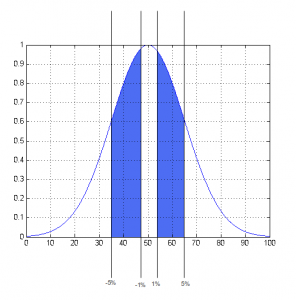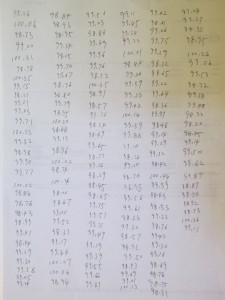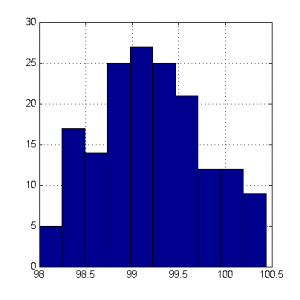It is well understood that resistors are typically binned in such a way that for a given tolerance the actual resistance values are distributed within the specified tolerance but are outside the range of the next tighter tolerance specification. So for instance, when you buy a bunch of 5% 100K resistor, you can expect the values to be between 95K and 99K or between 101K and 105K. Values between 99K and 101K will be missing as they are binned as 1% resistors.
There were some discussions on Dangerousprototypes on this very issue. Also Dave had made a couple of videos (1, 2) showing this phenomenon.
So a typical 5% resistor may have a distribution similar to the graph shown below (shaded area):

While the general shape is Gaussian, the values with smaller tolerances are typically binned into a higher grade.
I ordered a couple hundred of 100K 5% carbon film resistors from Avnet (CF14JT100K) a while ago and have found that many of these resistors have much tighter tolerance then the typical distributions seen above. So I decided to measure the remaining resistors and see what kind of distribution they have.
To my surprise, the measurements I got were not quite what I had expected. Most of the values are actually well within 1% of 100K. While the sample size I used is quite small (around 170 values), you can still see the outline of a typical Gaussian distribution:
 |
 |
So clearly, these resistors were not binned as some of the examples we saw from other sources. One possible explanation is that the manufacturing costs for these carbon film resistors are so low, it actually would cost more to bin them based on value deviations. The manufacturing process is also mature enough to guarantee that the resistor values stay well within the desired tolerance intervals.

